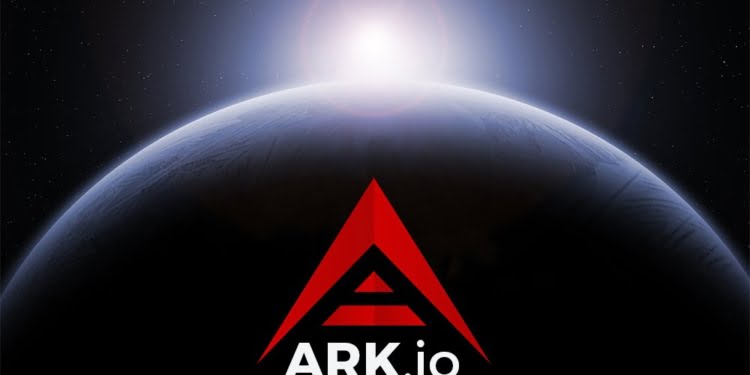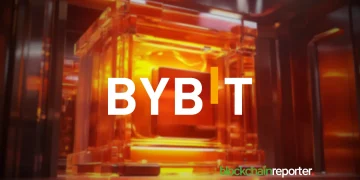- Eight second block time/18.75tps
- Interoperability allows users to transact across independent blockchains
- Instead of creating tokens on top of Ark, Ark makes it easy to create clones and sidechains
With the upcoming Core V2 rehaul of the entire Ark ecosystem, we thought it was time to do a deep dive for our readers into this exciting and highly ambitious projects.
The basics – what are the goals and structure of Ark?
Ark (ARK) is a blockchain. It comes with a large and expanding tool box for creating your own blockchains – unlike say ERC20-tokens on the Ethereum (ETH) chain, chains created in the Ark ecosystem do not need Ark itself working to function. That said, the main Ark chain and its tool box make interoperability very easy and customizable if desired.
Ark also allows you to make transactions on other blockchains, such as Ethereum, without ever touching those chains directly. You can even interact with privacy coins such as Horizen (ZEN) – creating private transactions even though Ark itself was not built to be a privacy coin. The fees paid to accomplish this interoperability are paid in Ark tokens.
Mining has been eschewed for delegated Proof of Stake (dPoS) – 51 delegates who can be voted out and replaced. To incentivize users to vote for them, most delegates distribute nearly all their block minting rewards to their voters.
In practice, this means that almost everyone who keeps their Ark tokens off exchanges votes for a delegate who shares the reward, and the ~5% inflation rate is largely cancelled out for these holders. Which, hey, incentivizes what is already considered best practice in crypto, namely keeping your tokens in a private wallet for which only you have the key.
Ark has a block time of eight seconds, and a transaction throughput of 150 transactions per block, or 18.75 tps. This puts it way ahead of the 7 tps hard cap for Bitcoin (BTC). There are of course chains that have reached higher tps – EOS (EOS) has seen some 1200 tps on its main net, with claims that it can handle several times that, but of course those numbers often comes with trade offs.
Ultimately Ark’s 18.75 cap too is a compromise. Shorter block times could easily be implemented, but the size of the blockchain would then grow faster, and right now there is no need for the added bloating that would entail.
The Origins of Ark
Ark started life in the summer of 2016 as a fork of Lisk (LSK) – which forked from Crypti. Two of Ark’s co-founders were co-founders of Crypti as well, and the majority of them had been elected delegates for one dPoS project or another. In total Ark had 27 co-founders, 11 of which are still working full time on the project, and the total development team currently sits at 23 people.
There is a managing director in the person of Mike Doty, a mechanical engineer with experience in aerospace engineering and robotics, but there is nothing like a one person who is the face of the organisation, like Vitalik Buterin has become for Ethereum, or Justin Sun for Tron. Instead all the team members are very active in the community, and several of them serve as faces outwards.
The future of Ark
The next big step for Ark is the Core v2 overhaul, which is currently up on a dev net, but not ready for general use. As mentioned above, the project originally forked off Lisk, but almost none of that inherited code will remain in use with the release of the v2 mainnet, which is slated for launch at some point in the last quarter of 2018.
New features will include multiple payment transactions – the ability to send transactions to multiple recipients in one go and for the price of a single transaction. Originally requested to make it smoother for delegates to pay out minting rewards, multipayments are now probably the most anticipated feature awaiting implementation. Beyond making life easier (and cheaper) for ordinary users and delegates, it will make things like airdrops much more pain free for anyone inclined to do one of those.
Also new will be dynamic fees. With a mining driven protocol such as Bitcoin, the main factor driving fees is network congestion – as blocks get crowded, users have to pay more if they want to see their transactions go through. By contrast, up to this point in Ark, fees have been fixed. With v2 it will be up to each delegate to decide what fee they want to set for the blocks they mint – which means, if users don’t like the network fees, they can boot your ass and appoint someone who will set the fees people want to see.
Smart contracts – a feature now available on many projects much younger than Ark, are of course available on the v1 blockchain, but are in for a substantial upgrade in 2019, with functionality to interact with smart contracts and make transactions on other chains such as Ethereum.
Also slated for 2019, in quarter 1 they expect to release the ARK Deployer GUI – a tool kit with user friendly GUI that will allow non-developers to easily clone the Ark chain and customize it to their specifications (Block time, number of network nodes, token supply, etc). The tool kit for this is largely complete; what remains is the ‘user friendly GUI’ part. Meaning other developers can already launch their own Ark compatible chains, but click and play level chain creators will have to wait a few months yet.
Beyond these there are a number of ambitious goals on the official roadmap. Per comments by the team, there is no ‘final’ goal for Ark. The items on the roadmap make up most of the milestones they are currently working towards, but as crypto evolves, so will Ark and the goals the team sets itself.
Final thoughts
Overall Ark is a very interesting project. Nothing is certain in crypto, but as the number of projects in the space grows, so surely does need for interoperability. Ark is not the only player in that game, but they are certainly one of the oldest and largest, and I have to say, while I already had a positive opinion of Ark before, in doing the research for this article I found that interest deepening. This is definitely a project I will be keeping my eyes on.























